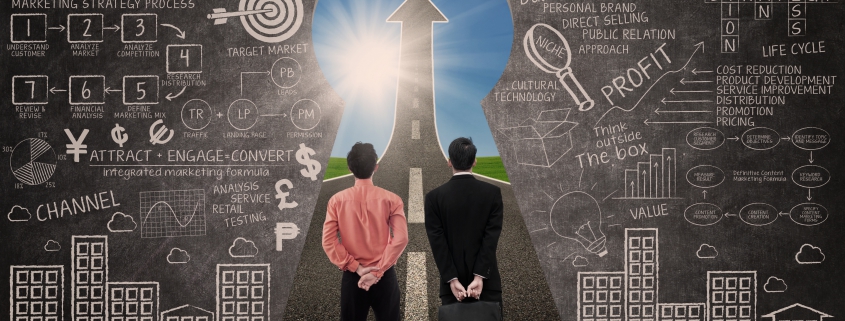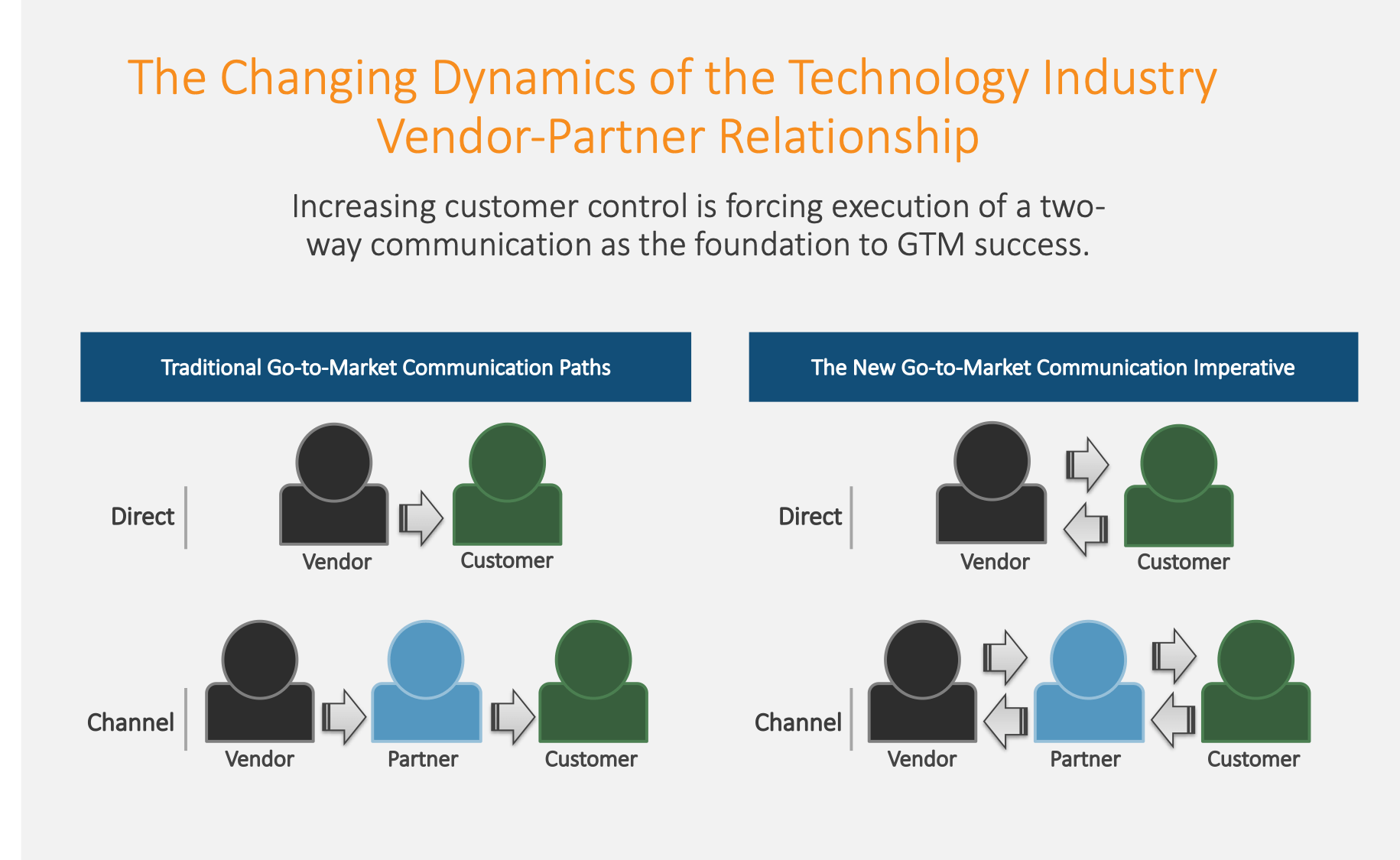Leveraging Channel Partners as Your Frontline to Sales Agility
As the technology industry landscape continues to shift towards XaaS recurring revenue models, the role of the channel is changing dramatically and forcing a new model for the vendor-partner relationship. While there are clear financial benefits of the recurring revenue transition, the underlying driver is the dramatic increase in customer control over the buying process.
The Maniacal Focus on Customer Experience
Customer needs are changing rapidly, and customers have access to significantly more information in their buying journeys than ever before. In addition, the costs of switching providers are decreasing in almost every solution market. The lines between a product and a service are blurring, making ‘stickiness’ more about service and experience than just product features alone. Breaking through the clutter is no longer about simply scaling a sales force or partner network to cover more product revenue, but rather enabling that coverage to deliver superior service; without this, the financial benefits of the recurring revenue model instantly disappear.
For direct sales forces, this has meant a new, maniacal focus on the customer experience as a differentiator.
Often this entails a new set of corporate KPIs (renewals, usage, satisfaction, etc.) as well as new coverage models, which has led to the proliferation of the “Customer Success” function broadly, and more nesting of new customer success-oriented imperatives within Account Manager roles. The feedback loop between the customer and the technology provider has become the single most critical factor to success. The new go-to-market imperative is the shift from a one-way stream of communication to the customer (viewed as the traditional routes-to-market) to a two-way communication stream.
How This is Changing Channel Dynamics
As technology solution-markets continue to quickly innovate, partners are emerging as the front line against the changing marketplace, becoming far more agile in their go-to-market execution. This has generally driven a shift from the ‘channel-as-a-reseller’ to the ‘channel-as-a-solution-provider’ model, represented by the significant growth of systems integrators and MSPs – The MSP market along is expected to be ~$245B by 2022.*
Because of this, successful vendor-partner relationships are becoming more symbiotic with increasing demands on the vendor. Not too long ago, a partner was really an extension of the vendor and stood to gain tremendously as a reseller to the end customer. But, with the shift to the solution sales model, the imperative and upside now also lies with the vendor to be an extension of the partner’s solution.
Put simply, there are two key implications for managing successful partner models under the new go-to-market imperative:
Enhancing ‘to-partner’ communication and enablement
Developing a robust ‘from-partner’ communication path
These two imperatives are increasingly placing partners at the front-line to successful sales agility and forcing more trust between the two parties.
1) Enhancing ‘To-Partner’ Communication and Enablement
Partner switching costs from technology vendors are going down, and, at the same time, they are receiving increased demands from customers. The end-customer experience of any given product is increasingly seen through implementation services and managed services provided by the partner. To deliver this value, partners require increased support. Partners must lean heavily on the vendor to support them on their journey beyond a reseller, and towards a solution provider.
So what does this mean tactically as you work with your channel partners?
-
Focus on Partner Experience
Just like the rise of focus with direct sales forces on customer experience, increasing focus on the partner experience is critical. While pipeline development metrics and end sales are still the priority, new, experience-oriented KPIs are necessary to identify the health of the channel.
-
Enable Customer Experience
For many partners, the shift to a subscription model has significant impacts on their GTM model. Proactively driving customer experience programs and best practices into the channel will be key. Don’t just assume that partners will be able to follow in lockstep.
-
Deliver Solution Selling Content
Enabling partners to solution sell around technology products is critical. Provide support beyond basic product-oriented enablement and help teach partners how to extend the value of your product with their solutions. It’s a win-win-win for vendors, partners, and customers.
-
Data-Driven Targeting / Performance Measurement
Engage and drive pipeline value with your partners through collaborative data-driven approaches and measurement. Show how your investment is paying off for them and increasingly tighten the bond between their solutions and your portfolio.
2) Developing a Robust ‘From-Partner’ Communication Path
While there are increased demands to deliver value to your partners, the most successful technology companies use their partners as innovation channels.
As competitive encroachment and customer demands grow, partners are the most valuable and accessible pulse on the rapidly changing market.
Think of your partner landscape just as you would your customer/prospect landscape. Focus intently on their changing needs and business models. This will drive your product and go-to-market innovation.
-
Engage, Listen and Show Commitment by Action
Simple as that. The quickest way to drive a lack of confidence in a vendor relationship is for a partner to feel like they are being listened to, but then see no action. If you are going to go through the motions of partner advisory councils and ‘platinum’ tiers, make sure you show the commitment through with actions.
-
Generate Ongoing Partner Insights
Detailed, structured and ongoing analytical analysis of partner sales patterns, enablement content consumption, and other channel sales signals is critical to identify what ‘good’ actually looks like. We have worked with many companies who drive change within their direct sales force from insights identified through channel partners.
-
Pilot Programs Through Partners
Think of your partners as a testing ground. Respond to the innovation ideas and drive pilots through select partners. Innovation that works for one can often be extended to the rest.
The subscription transition is driving a new imperative for the vendor-partner relationship. Viewing your channel partners as the frontline to your commercial agility is the new imperative. Companies leveraging the channel that fail to make this transition will lose in the race to differentiate on customer experience and value.
*Global Managed Services Market Research Report- Forecast 2022, May 2019
Download Our Report:
5 Emerging Growth Strategies to Win in the Subscription Economy
For many Tech enterprises, the move from an on-prem hardware and software sales model to a subscription-based “X-as-a-Service” model is inevitable. This transition forces sales and marketing teams to rethink their strategies for growth. So what will move the needle? To answer this question, our analysts sifted through 1,000s of digital data points to surface top go-to-market issues and the actions market leaders are taking, and then developed practical revenue growth strategies for you. Download the report below for market insights and potential tactical actions you can take.






